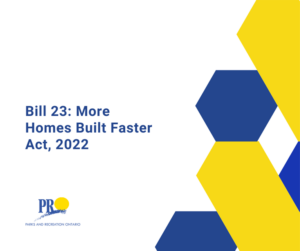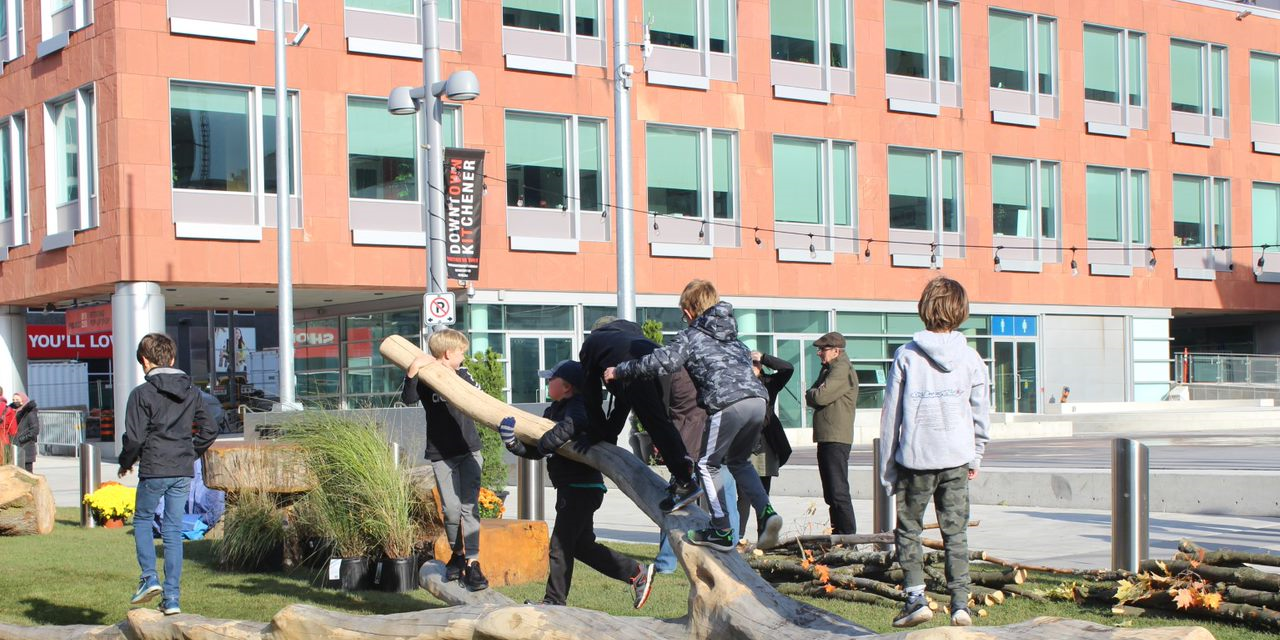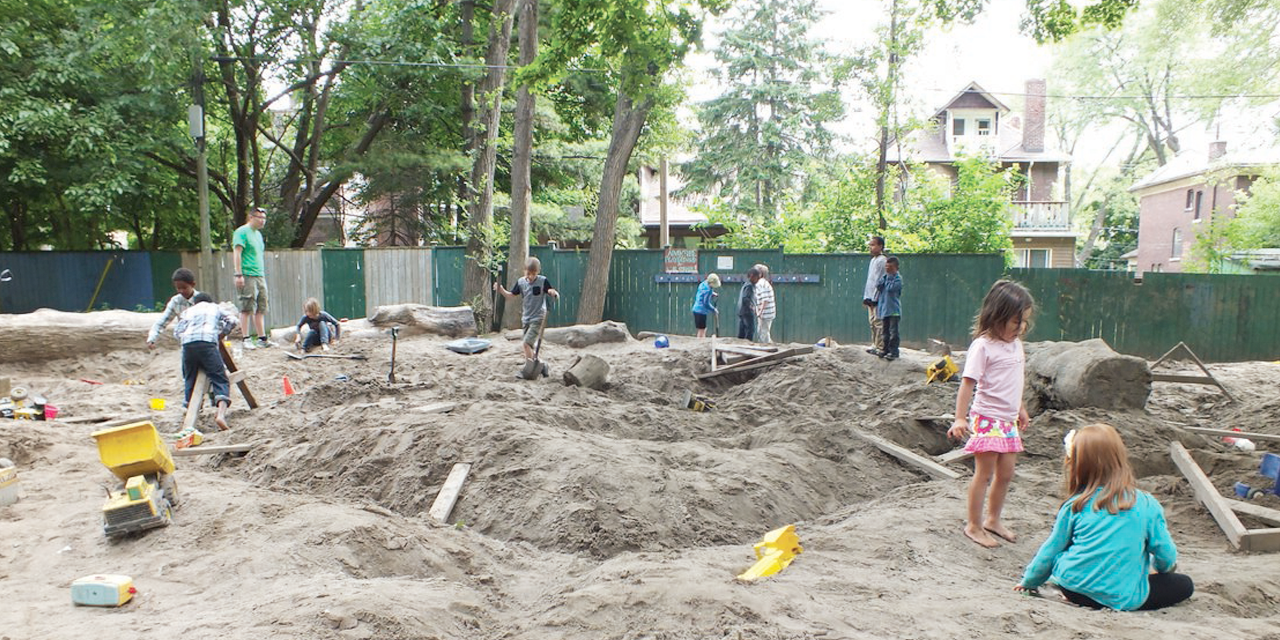
19 Apr A Conversation With Parinita Rajagopalan, Director, Policy and Partnerships, Parks and Recreation Ontario
Interview by: Jonathan Chan, Rosa Braico, Olivia Savona and Shameel Mohammed, University of Toronto Students
In 8 Questions, 8 80 Cities asks people with specific insights and expertise on topics related to our mission of creating better cities for all. We ask them about their passions and their history and points of view. And then, we ask them to suggest a question for our next interviewee.
Jonathan Chan, Rosa Braico, Olivia Savona and Shameel Mohammed, University of Toronto Students and 8 80 Cities 2022 Fall interns, spoke to Parinita Rajagopalan, Director, Policy and Partnerships, Parks and Recreation Ontario, about parks, the right to public space, the impacts of Bill 23, and park management.

Pari Rajagopalan
In a post-COVID world, as more employees work remotely, there are more vacant office buildings. So, how can cities revitalize their downtown areas, including becoming more “ready” for the rapidly growing aging population?
This is an exciting question because our mandate is province-wide, and there is a limited number of big cities in Ontario. A lot are mid-sized communities, but the problems are still the same. They still have an Asian ageing population, and there is still a need to create an inclusive and accessible. Three things are making their way through the sector: the first is winterizing spaces and making sure there’s snow removal to make paths more space for folks with mobility issues that will help increase usage.
The second, particularly useful in parks, is creating available bathrooms year-round. Many parks and rec departments have bathrooms or rent porta potties for public spaces, especially in the Summer. When porta potties are gone, it makes the space less accessible. That’s another critical thing that has picked up in the parks and rec department.
Finally, I think something that has been broken since the pandemic is the idea of a ‘Public Square,’ creating spaces where people can sit and convene.
Could you tell us more about your work at Parks and Recreation Ontario?
Parks and Recreation Ontario (PRO) was formed in 1995 by professionals working around the sector and decided there was no coordinated voice. So, the vision of PRO was to create an Ontario where every single person had access to high-quality Parks and recreation services. From then, it grew to an organization that had three buttons. We do advocacy and policy, capacity building, which is professional development opportunities and training credits for recreational leaders. My work lives in the advocacy and policy space, but it’s pretty variable.
During the pandemic, a lot of it had to do with looking at the regulations that were coming out every week and interpreting them, but also representing the challenges facing the government and a lot representing the needs of Ontarians. So, the belief that Parks and Recs are not just benefits guides so much of the work of what we do. And our focus during the pandemic was to provide the maximum service while keeping Ontarians safe. After the pandemic, we switched to our original purpose, which was to look at trends coming and new legislation representing the needs of the sector to ensure the legislation coming up would still meet the needs of the communities as they grow. I should add a lot of it is drawing organizations working on similar things and making sure we are part of a machinery that raises the public discourse on issues in the private sector.
 At 8 80 Cities, we talk a lot about three fundamental rights – The right to Public Space, the Right to participation and the right to mobility. How do you think Bill 23 will impact the Right to Public Space?
At 8 80 Cities, we talk a lot about three fundamental rights – The right to Public Space, the Right to participation and the right to mobility. How do you think Bill 23 will impact the Right to Public Space?
I think there are three key areas related to this. The first is looking at the parkland exemptions for affordable and attainable housing. So, what the legislation says is if a developer is building a new development, let’s say that it is “affordable,” they are not required to set aside any area for parkland dedication. There’s no cash and lieu for that at all. And I see the future being cities and communities almost segregated along economic lines more so than they already are. So, areas that have a heavy affordable housing bent will have fewer, maybe no spaces that are green along with the community development charges that have been exempted. So essentially, what you are looking at is communities wherein one side of the city has nothing, then the other side that are most established areas, you will have all of the amenities we’ve grown accustomed to.
The second impact is the number of parkland dedications. So, Bill 23 cuts in half the parkland dedication the developers need to set aside. So where before this, if you were moving into a new condo development, you could expect 2 hectares of parkland for every 600 units. Now you are looking at 1 hectare, which is a significant decrease and the impacts in which are held in so many ways other than the obvious. The obvious is if you go outside and you see a crowd of people in a park, you are less likely to go there. Especially now post covid. But the other thing is that space will feel more ‘wear and tear’ and harder to maintain and cost more in the future.
And I think the final impact is around what constitutes appropriate parkland. Before the implementation of Bill 23, the land had to have a few requirements. Now with Bill 23, stratified parks are considered acceptable parks for parkland dedication, privately operated spaces are considered acceptable, and everyone’s favourite, incorporated parks will be acceptable. And what you are essentially saying with this legislation is that with less parkland, the quality of it will not be the same. So, if you look at it from a ‘rights’ perspective, it is unequal and inaccessible and ultimately will lead to the degradation of public spaces.
Our work on the Kitchener Pop-Up Park saw us take over a main street downtown and transform it into a green oasis. In response to Bill 23, do you see a future trend in creating parks in unexpected places?
Yes, I think so, so one of the pieces that we have been looking at really carefully is the Privately Operated Publicly Accessible Spaces. Because the onus will be on municipalities and municipal governments, in particular, to create relationships with private corporations to ensure they can program those spaces in a way that is sustainable to run. So that is certainly something that we see as a trend.

Kids playing at the Kitchener Pop-Up Park
What concerns do stakeholders raise about Bill 23’s impacts on parks and green spaces?
The concern we have seen is the parkland quality, which is a big one. But also the economic impact of the Bill so the financial. For the reasons I said before, it will be costlier to maintain small park areas that are used by more people. That cost right now is unknown because of the legislation. The way it is written does not have enough detail to determine what that would mean for municipalities in all senses. What we do see through cuts in cash and lieu and dedication and cuts in development charges is a significant fiscal loss for municipalities. So, in Mississauga, where a new development would once bring in 300 million dollars if you recost under the new legislation, it will bring 18 million dollars which in Mississauga won’t buy you a lot. And I think the most pressing issue around it is many municipalities, especially ones that are rapidly developing, see it as a now-or-never problem. If they cannot buy parkland now, they will never buy it, and that is one of those unchangeable things which can’t be walked back with regulatory amendments in a few years, so that is just a change that needs to happen now.
Under Bill 23, the parkland dedication requirements for developers are reduced. How does this increase pressure on Parks and Recreation Departments and Planning Departments across Ontario?
Fewer parks and fewer high-quality spaces will cost more to manage and maintain. To put it simply, if you are looking at a park that has a swing set on it, previously that swing set would have been used by, let’s say, 600 kids from those 600 units; well, now you will have 1200 kids using the same swing set. So, the wear and tear of the swing set are much more significant, and now municipal departments would not have to go in and fix the swing set. They now have to go to the condo board to ask them if they can go in and fix the swing set because it is now a privately-owned space. So, in practical terms, the increased pressure will be fiscal and capacity. There is no mechanism for that public and private partnership right now because it has never been necessary. So, Bill 23 changes years of city planning norms. It will take Parks and Recs time to learn a new way to collaborate across the board, not just with community agencies but with condo boards.

What do you wish Ontarians would know about Bill 23? What can people do to have their voices heard?
I think the overarching message is it will not necessarily be creating more affordable housing, and even if it does, it will be at the expense of livable communities. Continue to contact your Provincial government representative and send letters. We know from the work we have been doing from Bill 23 that there has just been a ton of pressure, specifically on conservative MPPS; you know there is the legislation that has passed, but the window for regulatory amendments has not passed yet. Sustain and consistent support is needed.
What question do you want to ask the next interviewee?
How best can municipalities work with community organizations and folks doing this kind of work to ensure they are inclusive and open to new ideas?



